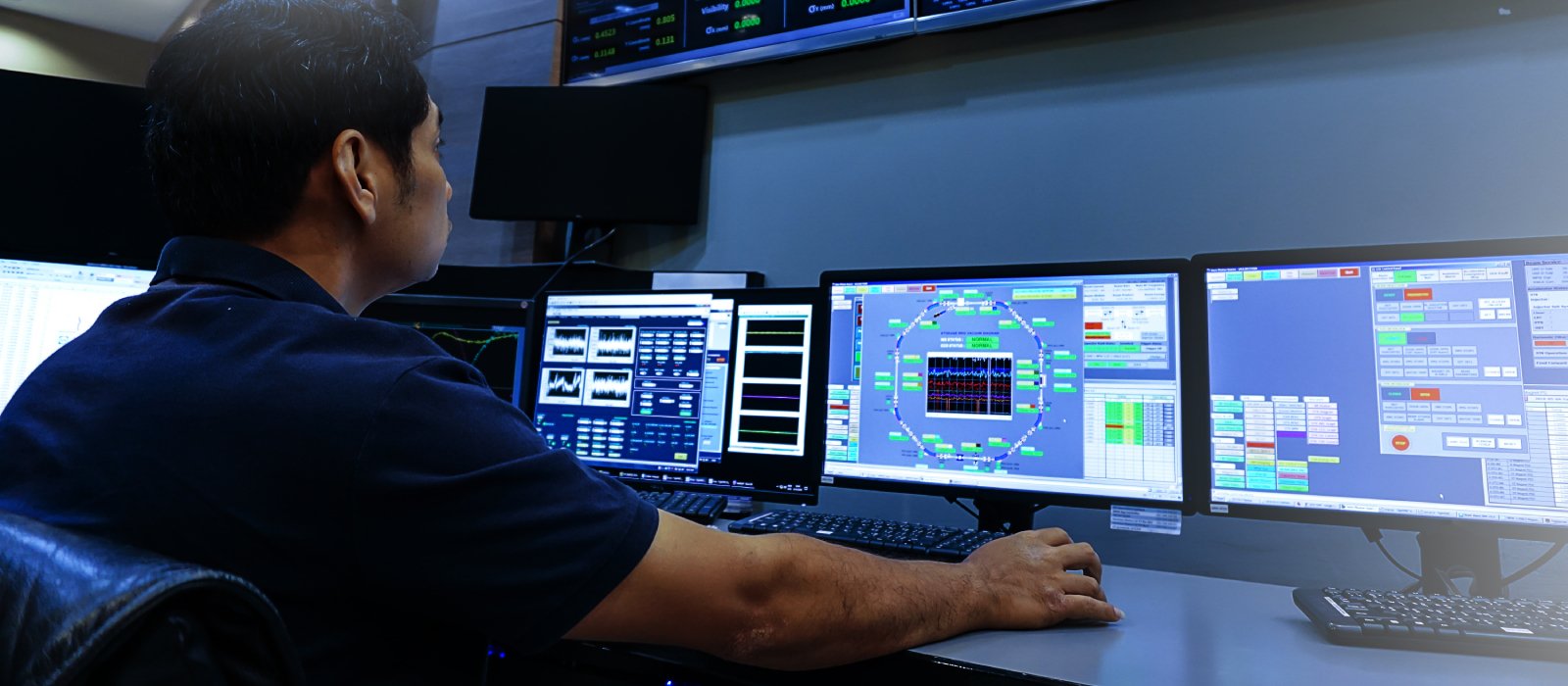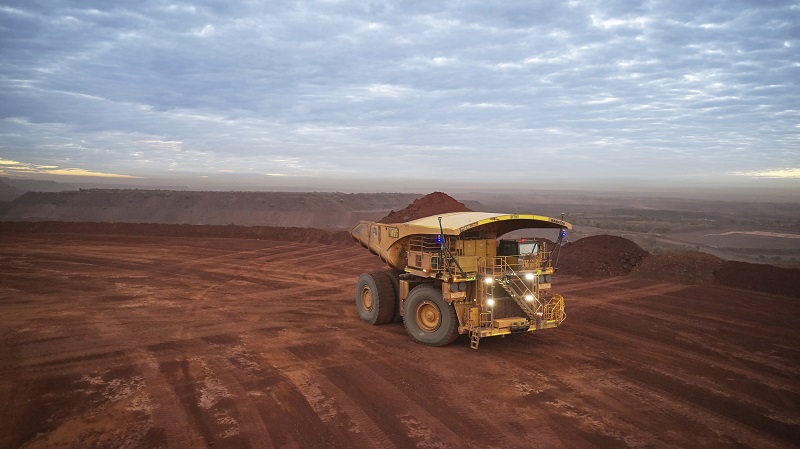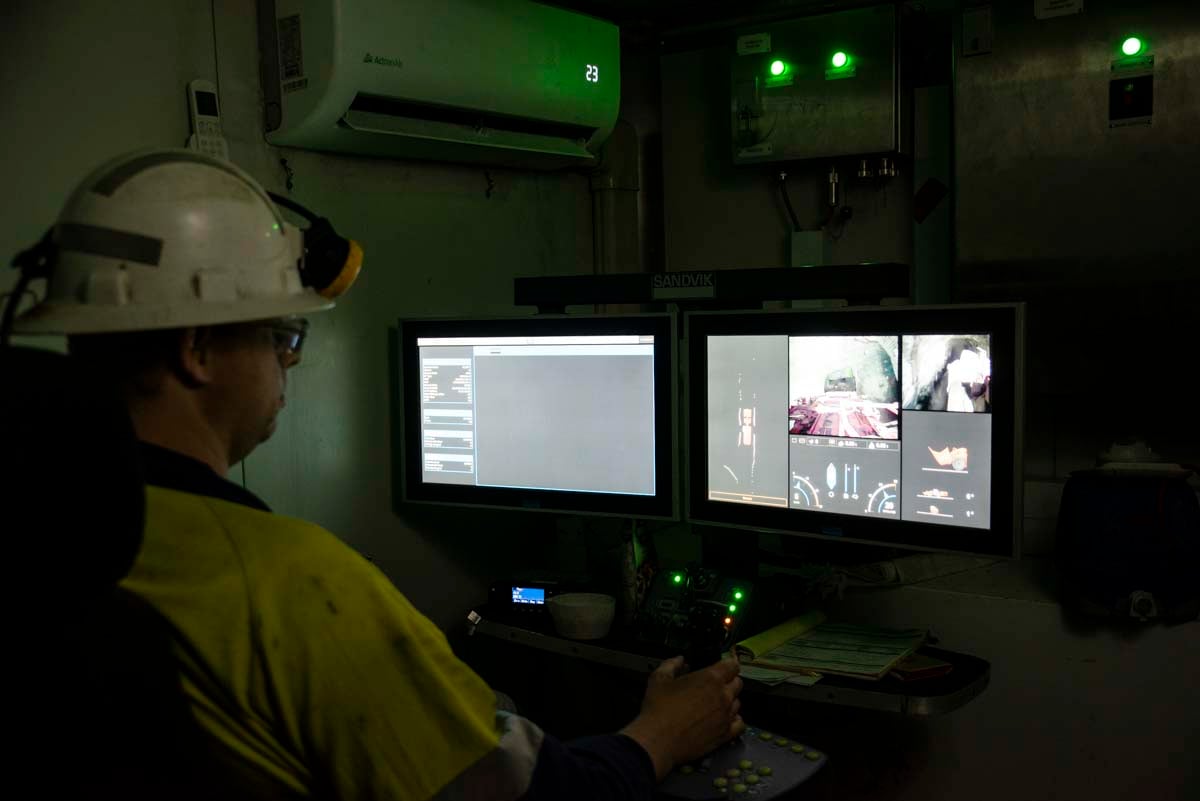Autonomous mining: creating new benefits and skills

Aurecon’s Autonomous Technology Director Graeme Mitchell MAusIMM penned a recent article titled Zero-entry autonomous mining: Where’s my hoverboard, Marty?, which explored the golden opportunities presented by adopting semi- or fully-autonomous mining operations.
The AusIMM Bulletin sat down with Graeme to explore the implications that zero-entry autonomous mining will have for professionals and the skills needed in the future.
You have noted that people will still be required in zero-entry autonomous mining, but the mix of skills is still unknown. Are there other industries we can look to that are further down the automation path that might give us an idea of the skills the industry will need?
While the required skills mix for zero-entry autonomous mining is slowly emerging, there are other industry sectors that have progressed further in the automation and robotics field, of which the mining industry should leverage to accelerate its understanding of the required skills mix.
These industries include petroleum, defence, and aerospace, and most have identified the need to build a highly skilled science, technology, engineering and mathematics specialised workforce to support their future operations.
What we also know is that zero-entry mining will require autonomous systems with a higher level of artificial intelligence and machine learning capability than is currently available in deployed OEM autonomous systems today. Therefore, the skills required to design, deploy, maintain and support these type of systems need to be considered as part of the overall skills mix and should be included in the assessment of any future workforce.
Zero-entry mining will require autonomous systems with a higher level of artificial intelligence and machine learning capability than is currently available.
In addition, the mining, petroleum, defence and aerospace industries have all excelled at leveraging remote operations centres to drive improvements in safety and operational performance. Perhaps there’s an opportunity to share learnings around skills mix to support future operations from these centres.

Does zero-entry autonomous mining also mean zero harm workplaces? Or will there still be risks to people in different ways that we need to be aware of?
Zero-entry autonomous mining does not directly equate to a zero-harm workplace. What zero-entry mining does is significantly improve an organisation’s ability to operate a workplace without exposing individuals to injury or risk that they would otherwise be exposed to in a normal mixed-mode autonomous mining operation (mixed-mode refers to both personnel-controlled and autonomous vehicles operating together). Therefore, zero-entry mining improves the organisation’s goal of achieving zero-harm in the workplace.
Zero-entry mining significantly reduces personnel risk exposure as there are less people working in and operating around large mobile autonomous vehicles. In zero-entry mining, the main concept is to keep people out of the autonomous operations zone where the autonomous machines are operating.
An example of a different way personnel would be exposed to risk would be in relation to a maintenance task that needed to be conducted within the autonomous operations zone while the autonomous vehicles are still operating; for example, a maintenance worker needing to fix a water bore in the bottom of the pit.
Zero-entry mining significantly reduces personnel risk exposure as there are less people working in and operating around large mobile autonomous vehicles.
Without stopping the autonomous mining operation, the maintenance worker would travel to the bore location in an autonomous light vehicle control operated within the autonomous system’s virtual world. Upon arrival at the bore, an exclusion zone is automatically applied around the work area that stops any other autonomous vehicles from entering that zone.
This is significantly safer and has a much lower risk profile than in today’s current mixed-mode autonomous operations for a worker undertaking that same maintenance task.

How can industry, government and education institutions collaborate on upskilling the current workforce, and training the employees of the future?
Industry and government are already embarking on this journey. In Western Australia, a partnership has been established between the government, South Metropolitan TAFE and Rio Tinto to develop a nationally recognised Certificate IV in Autonomous Control and Remote Operations. In Queensland, a future skills partnership has been established between BHP Mitsubishi Alliance, TAFE Queensland and Central Queensland University Australia to develop autonomy-related qualifications for surface mining.
Both of these partnerships are addressing the changing requirements of a future highly-skilled workforce and developing courses that ensure future workers are prepared for advancements and innovation in autonomous mining, such as the increasing use of automation, machine learning and artificial intelligence.
In addition, there are various industry bodies such as the Global Mining Guidelines Group with initiatives underway that are considering areas such as skills migration and workforce of the future. These initiatives are exploring the various challenges that the mining industry is facing and collaborating on ways to address them.
Are mine planners already designing new mines with zero-entry automation in mind? If not, why not?
With the increase in autonomous systems deployments across the mining sector, miners will continually look at how to extract maximum value out of their significant investment in autonomous mining. The mine planning and operations teams will need to work collaboratively together to optimise the extraction process through improved mine designs and schedules that are optimised for autonomous operations.
Are they specifically designing their new mines with zero-entry automation in mind? Well they should be, given that in the current mixed-mode autonomous operation, autonomy related delays such as obstacle detections and manned vehicle interactions, can have a significant impact on both safety and productivity. What I mean here is if an autonomous truck sees an obstacle in its path or a staffed vehicle interaction, it either slows down, stops or takes evasive action to manoeuvre around the object or staffed vehicle. This can then have an impact on other trucks operating in close proximity, causing bunching of trucks and affecting overall productivity.
“We need to kick off a body of work that really challenges the way we currently mine beyond the constraints of current thinking.”
If we also look through a safety lens it makes sense to try and isolate people from autonomous vehicle interactions, and this is where optimising the mine plan for zero-entry mining is so important. The majority of safety incidents that have occurred in autonomous mining have been related to people not following processes; therefore, we should be looking to optimise the mine plan to remove people from the interaction with autonomous vehicles from a productivity and safety point of view.
There will also be some cultural challenges that need to be overcome to achieve zero-entry mining. Simply overlaying an autonomous system onto an existing mine plan and expecting the system to improve safety and productivity is an unrealistic expectation.
An area that I am passionate about is looking beyond the current constraints with some of the existing technology and considering next generation mine planning opportunities. We need to kick off a body of work that really challenges the way we currently mine beyond the constraints of current thinking.
If we as an industry develop expertise in autonomous mining, are there other industries where we could export our knowledge and people? (Similarities have been drawn, for example, to the remote nature of mining operations and the challenges presented by outer space).
The space industry, or off-Earth mining, is an obvious industry whereby the technology and skills in operating remote autonomous mining equipment on Earth should be exported into the space sector.

In the mining sector today, many of the mines (both staffed and autonomous operations) are operated from remote operating centres located in major capital cities far from the actual mining operations. Rio Tinto, BHP, FMG, and Roy Hill are among the miners that have successfully transitioned some of their operations and upskilled the associated workforce towards mixed-mode autonomous mining.
As we transition towards the zero-entry mining, the challenges of operating equipment remotely, along with the skills required to overcome these challenges, will be synergistic to some extent to those that are required in off-Earth mining.
Whilst the challenges of operating equipment on the Moon or other planets should not be underestimated, the skills acquired by miners in both remote operations and autonomous operations on Earth should be transferable to the off-earth mining sector.
Other industries that would benefit from the new mining workforce would be other off-road industries such as construction and transportation. The future for autonomous operations, I hope, will see the mining industry lead innovation once again for the greater benefit of transfer of knowledge and technology to more industries.